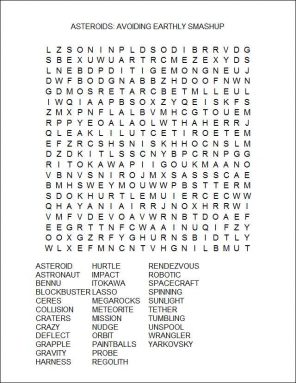Asteroids: Avoiding an Earthly smashup
Scientists want to find, visit and even move dangerous asteroids before they can hit Earth
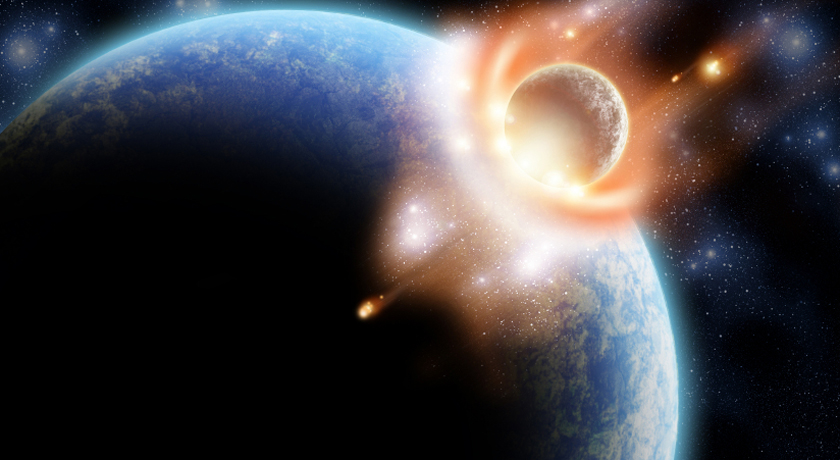
This artist’s rendition depicts a huge asteroid entering Earth’s atmosphere. Nearly 1,500 large asteroids are orbiting in paths that might one day send them hurtling toward Earth. Scientists are tracking these mighty space rocks and even planning for how they might divert from a collision course.
puchan/ iStockphoto
Bennu is a slow-spinning, fast-flying asteroid, and it’s coming our way.
Bennu zips by Earth every six years. Experts have been keeping close tabs on the lumpy space rock since discovering it in 1999. They are watching it because Bennu measures about 1.6 kilometers (1 mile) around. That is big enough to pack a wallop if it slams into Earth.
If Bennu does hit us, and there is a chance that someday it could, the asteroid would hurtle into the atmosphere at nearly four times the speed of sound. The collision would release enough energy to cause widespread devastation across the globe. But take heart: Life probably would not disappear.
Probably.
Not surprisingly, Bennu is the most-studied asteroid in the solar system, says Dante Lauretta. He’s a planetary scientist at the University of Arizona in Tucson. He’s also in charge of a mission that in 2016 will launch a robotic spacecraft to explore Bennu. Its goal: to collect more information about this possible threat.
“We want to know where Bennu is going and what’s the likelihood that it will hit the Earth,” he says.
Just like Earth and the other planets, asteroids orbit the sun. Bennu is one of nearly 1,500 “potentially hazardous asteroids” that scientists are tracking with particular attention. Each of these asteroids could make a threatening and close approach to Earth. For an asteroid, “close” means it must come within 7.5 million kilometers (4.8 million miles) of Earth. But don’t lose any sleep: For now, Bennu’s closest predicted brush with us won’t happen until 2135, when it will pass within about 300,000 kilometers (186,000 miles) of Earth.
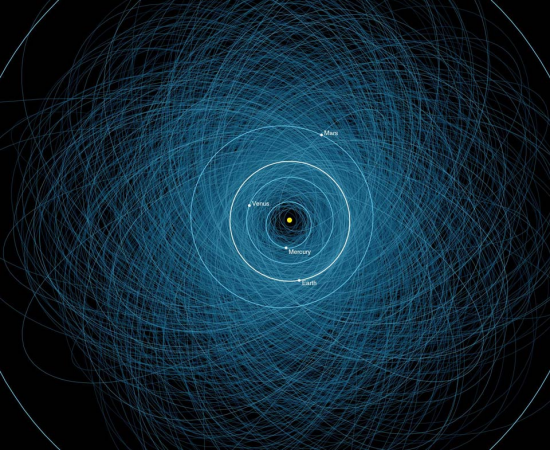
Scientists who track asteroids have a simple goal: Find any Earth-bound megarocks before they find Earth. These researchers are designing devices to capture asteroids. Other scientists are working to knock them far enough off course to avoid a deadly collision. Still other scientists, including Lauretta, are planning space missions to visit asteroids — or even bring them back to Earth. In the process, these experts are learning more about where asteroids came from and where they’re going.
Shaped by collisions
Shortly after sunrise on February 15, 2013, people in central Russia watched a ball of fire careen across the sky. The blaze came from a meteor. A meteor is an object from space that falls into Earth’s atmosphere. In this case, the space rock measured 20 meters (66 feet) across when it entered the atmosphere at 67,000 kilometers (41,600 miles) per hour. Friction with Earth’s air heated the meteor. It exploded high in the atmosphere, creating a flash brighter than the sun and a thunderous boom that shattered windows. No one died, although some 1,500 people suffered cuts and other injuries. The explosion also showered the ground with meteorites, which are small chunks of rocky debris that survive the fall and land on Earth.
The meteor likely broke off an asteroid during a collision hundreds of millions of years ago. That’s what researchers reported in a May study published in Scientific Reports, after studying the meteor’s flight and the meteorites recovered from the ground.
Asteroids are as old as the planets. Over their long lifetimes, ancient and powerful collisions have shaped them. Scientists have seen evidence of that firsthand. In 2003, Japanese scientists sent a spacecraft called Hayabusa to land on an asteroid. Called Itokawa, the asteroid looks a little like a giant space cucumber. Planetary scientist Tomoki Nakamura at Tohoku University in Japan led the study of the samples of the asteroid brought back to Earth.
When Nakamura opened the canister containing the samples, it looked empty. But by studying its walls, he found particles of dust. He used an electron microscope to take a close look at the grit. This tool fires a beam of electrons at a sample. Some electrons bounce off the particles, and some are absorbed, generating X-rays with different energies. By studying these X-rays, scientists can identify the chemical makeup of a sample.
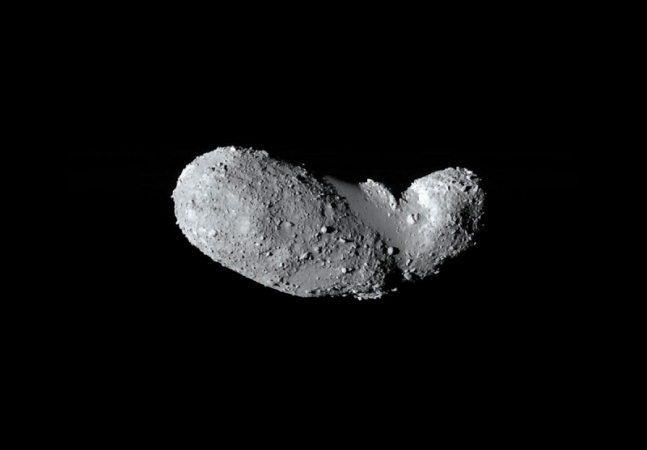
That’s what Nakamura and his team did. And they found minerals. One of them, called troilite, is very rare on Earth but common in asteroids. That finding told the scientists that Hayabusa’s grit really did originate in an asteroid.
In fact, Nakamura says, the particles told an exciting story. His probing suggests Itokawa used to be 100 times bigger than it is today. The asteroid likely broke apart during some long ago impact with another asteroid. That impact did not just break up the rocks. It also fractured the particles that Nakamura studied.
The microscopic surfaces of the particles revealed to scientists the presence of tiny craters created during high-impact collisions. Researchers reported the discovery, two years ago, in the Proceedings of the National Academy of Sciences. Eizo Nakamura, a planetary scientist at Okayama University in Japan, led the research team.
Large craters, visible to the naked eye and scattered across the surface of Earth, show that asteroid impacts are a natural part of history. Collisions, with rocks bigger than Bennu, have been catastrophic. For instance, 65 million years ago, an asteroid smashed into the Yucatán Peninsula of what is now Mexico. The dust and debris kicked up during the collision changed Earth’s climate so dramatically that it is believed to have caused the extinction of the dinosaurs (or at least shoved them in that direction).
But don’t despair: There’s hope for humankind. Scientists predict that an “extinction-level” asteroid, measuring 5 kilometers (3 miles) across, crosses paths with Earth only about once every 1 billion years. That means the scientists working hard to avoid such an event should have plenty of time to prepare.
Crumbs from the early days
Asteroids are the crumbs left over from the formation of the solar system, 4.6 billion years ago. Gravity forced rock and dust to clump and glom together. What resulted were eight planets and their dozens of moons. The millions of rocky crumbs — asteroids — kept their independence.
Tomoki Nakamura points to an important open question: “Why didn’t these small asteroids gather to form a giant planet like Earth or Mars?”
By studying asteroids, scientists hope to answer this and other questions about the raw ingredients of our solar system. A flurry of new and ongoing space missions promise to start providing answers.
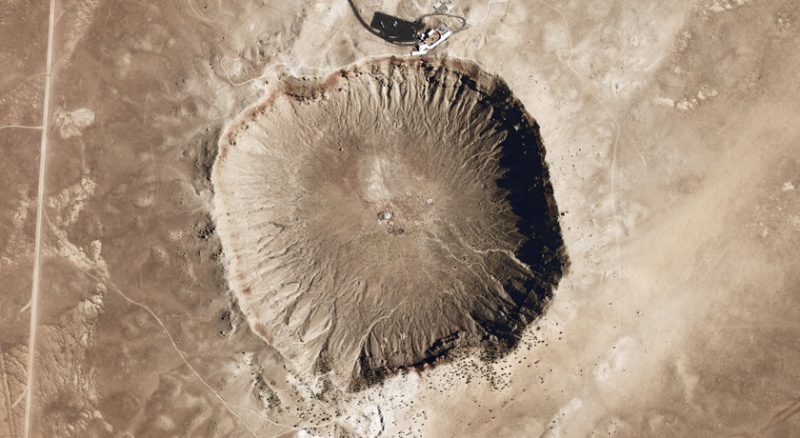
One of these robotic missions will visit Ceres (SEER-eez), the largest known asteroid. It has a diameter of 950 kilometers (590 miles). That is about as far across as the state of Montana at its widest. Ceres contains more than a quarter of the combined mass of all the asteroids. Scientists will learn a lot more about Ceres late next spring. That’s when NASA’s Dawn spacecraft should arrive there. During its five-month visit, Dawn will orbit the asteroid and map its surface. Dawn is no stranger to asteroids: It spent 14 months orbiting Vesta, the second most massive asteroid, in 2011 and 2012.
Ceres isn’t the only other asteroid ready for a close-up. Earlier this year, scientists and engineers began building a spacecraft to land on Bennu — that lumpy asteroid at risk of one day colliding with Earth. Lauretta, at the University of Arizona, is in charge of the mission. Known as OSIRIS-REx — for the Origins-Spectral Interpretation Resource Identification Security Regolith Explorer — this mission is something he has been working on for a decade.
Intercepting and then landing on an asteroid is no small feat. Lauretta likens its complexity to getting one airplane to match the speed and position of another so that it can refuel that second plane in mid-flight. Except there’s a critical difference: At the time of the meetup, Bennu and the spacecraft will be on the other side of the sun. NASA gets just one chance to make this billion-dollar mission work.
“Not only do we have to show up at the right place at the right time, but we have to be going exactly the same speed and in the same direction,” Lauretta says. “It requires a lot of detailed calculations. And every step has to be planned in great detail to make the rendezvous (RON-day-voo) happen.”
Scientists hope OSIRIS-REx will help answer two kinds of questions. First, by studying its minerals, scientists might start to pinpoint the asteroid’s origins. “We can start to see where this guy might have come from,” Lauretta explains.
Second, a close-up probe of Bennu will help researchers better estimate the risk of a collision. Many asteroids, including Bennu, tumble their way through space. Like any spinning object in orbit around the sun, Bennu has days and nights. The side of the asteroid facing the sun absorbs sunlight. It then emits that energy as heat outward, into space. The process gives the asteroid a tiny push — enough to cause it to spin. Now the recently warmed side turns away from the sun, and falls into night.
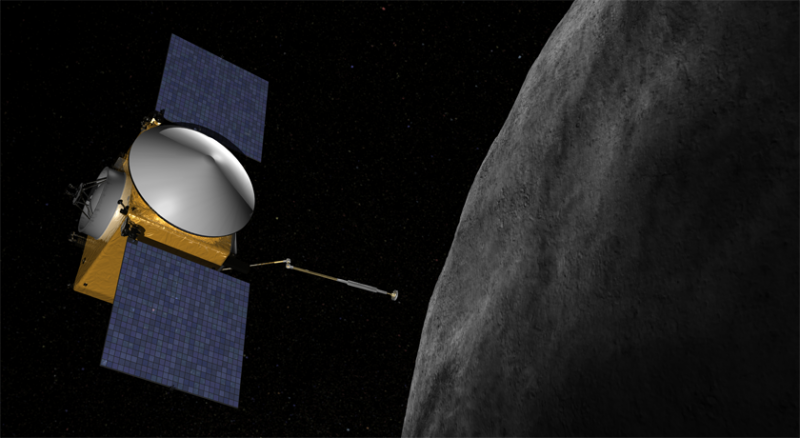
This thermal heat-and-spin cycle is called the Yarkovsky effect. And it can, over time, push an asteroid off its predicted orbit. Scientists also plan for the OSIRIS-REx spacecraft to collect samples from the loose material, called regolith, blanketing the asteroid’s surface. This material will help scientists determine whether the Yarkovsky effect might put Bennu even closer (or farther) from a collision course with Earth.
Lassoing an asteroid
If an asteroid does appear on course to one day collide with Earth, scientists and engineers want to be ready. NASA recently started planning a mission called the Asteroid Redirect Mission. Its goal is to first send a robotic spacecraft to capture a near-Earth asteroid and move it into orbit around the moon. Later, during the mid-2020s, NASA would then send astronauts to explore the asteroid.
But capturing an asteroid is easier said than done. Figuring out how to harness, much less move, a fast-flying space rock will take creativity. NASA hasn’t yet settled on a strategy to grab that asteroid, or move it around. And we’re a long way from being able to bag an asteroid.
Some smart thinkers have proposed clever ways to push an asteroid off its course. In 2012, for instance, Sung Wook Paek argued that painting an asteroid might do the trick. A graduate student at the Massachusetts Institute of Technology in Cambridge, he proposed firing paintballs at an asteroid from close range.
The impact of the pellets would push the asteroid a little. But over time, that white paint would help, too. Its white color would reflect the sun’s light. The sunlight bouncing off the asteroid would also nudge the rock off its path. Paek’s idea won the top prize in 2012 at a United Nations competition to find potentially affordable ways to deflect asteroids.
Physicist Robert Hoyt has another idea. NASA has given his company, Tethers Unlimited, funding — most recently $100,000 — to develop a device to slow down a spinning asteroid. His device might even be useful in moving asteroids in space.
The idea is to send a small spacecraft near an asteroid. There it would launch a suitcase-sized device called WRANGLER — for the Weightless Rendezvous and Net Grapple to Limit Excess Rotation. Once it’s close enough to the asteroid, it will release a net or bag to surround the big rock.
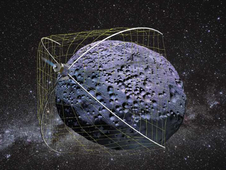
“The WRANGLER device drains a huge amount of rotational momentum from the asteroid,” Hoyt says. While this happens, another craft could latch onto that suitcase-sized device and then pull the asteroid off course. “It could be one way of grabbing onto a dangerous asteroid so we could tow it,” he explains.
Hoyt started working on the concept more than 10 years ago. It was originally designed to catch fast-spinning space junk and remove it from orbit. He explains the idea was born of a dedication to finding practical solutions to difficult problems. He acknowledges that other scientists have often regarded his ideas as far-fetched.
“I’ve learned not to be afraid to think about big problems,” Hoyt says, adding that he doesn’t mind if others find his designs “a little crazy.”
Of course, the idea that an asteroid could wipe us out already sounds a little crazy, like something lifted from the plot of a sci-fi blockbuster. But the risk is real. And to tackle such a big problem, Hoyt says people need to combine new ideas with solid science. Putting in enough hard work helps too, he adds. “Eventually you can convince people that your crazy ideas will work.”
Power Words
asteroid A rocky object in orbit around the sun. Most orbit in a region that falls between the orbits of Mars and Jupiter. Astronomers refer to this region as the asteroid belt.
atmosphere The envelope of gases surrounding Earth or another planet.
crater A large, bowl-shaped cavity in the ground or on the surface of a planet or the moon. They are typically caused by an explosion or the impact of a meteorite or other celestial body.
electron microscope A microscope with high resolution and magnification that uses electrons rather than light to image an object.
graduate student Someone working toward an advanced degree by taking classes and performing research. This work is done after the student has already graduated from college (usually with a four-year degree).
gravity The force that attracts anything with mass, or bulk, toward any other thing with mass. The more mass that something has, the greater its gravity.
meteor A lump of rock or metal from space that hits the atmosphere of Earth. In space it is known as a meteoroid. When you see it in the sky it is a meteor. And when it hits the ground it is called a meteorite.
momentum A measure of the motion of something, made by multiplying its mass and velocity. Changing the speed or direction of an object will also alter its momentum.
moon The natural satellite of any planet.
National Aeronautics and Space Administration (NASA) Created in 1958, this U.S. agency has become a leader in space research and in stimulating public interest in space exploration. It was through NASA that the United States sent people into orbit and ultimately to the moon. It has also sent research craft to study planets and other celestial objects in our solar system.
orbit The curved path of a celestial object or spacecraft around a star, planet or moon. One orbit equals a complete circuit around a celestial body.
planet A celestial object that orbits a star, is big enough for gravity to have squashed it into a roundish ball and it must have cleared other objects out of the way in its orbital neighborhood. To accomplish the third feat, it must be big enough to pull neighboring objects into the planet itself or to sling-shot them around the planet and off into outer space. Astronomers of the International Astronomical Union (IAU) created this three-part scientific definition of a planet in August 2006 to determine Pluto’s status. Based on that definition, IAU ruled that Pluto did not qualify. The solar system now consists of eight planets: Mercury, Venus, Earth, Mars, Jupiter, Saturn, Uranus and Neptune.
regolith A layer of loose, fragmented material covering the surface of a planet, moon or asteroid. On Earth, regolith is a product of weathering. On asteroids, the material is formed through impacts with other objects in space.
rendezvous A French word meaning to meet up with.
solar system The eight major planets and their moons in orbit around the sun, together with smaller bodies in the form of dwarf planets, asteroids, meteoroids and comets.
tether To tie something with a rope or chain to restrict its movement. (Or a rope or chain used to restrict the movement of something else.)
Yarkovsky effect A force that acts on a spinning object in space, caused by the radiation of photons, the particles that carry light.
wrangler A person who is in charge of horses or other livestock. The verb to wrangle means to round up or to herd livestock.
